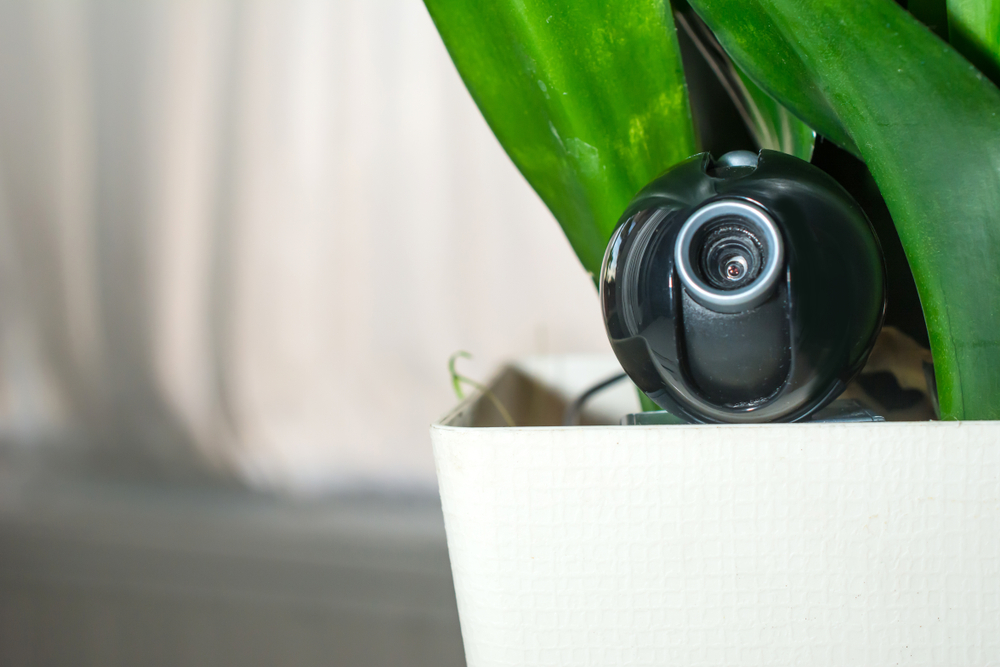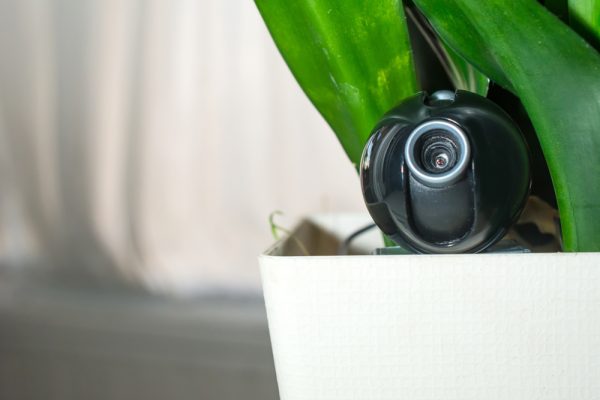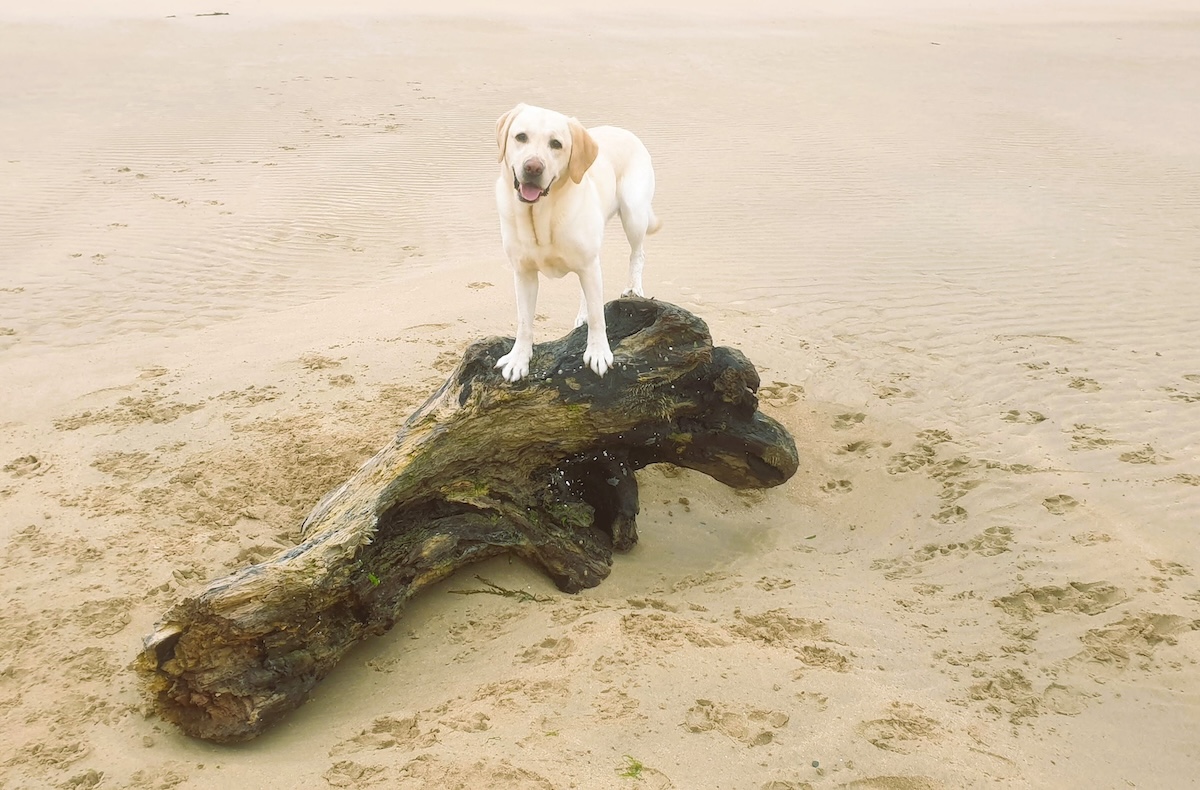If your dog ever seems unusually photogenic or fearful right as you’re about to take a photo, it might seem like they can sense the camera. After all, dogs can detect all sorts of things with their enhanced senses of smell and hearing. Surprisingly, it’s more complicated than that.
Dogs don’t understand how cameras work or the concept of photography, but they can recognize your camera or phone as a foreign object that produces sound and light, as well as identify a familiar face in a picture 1. Many dogs are initially startled by the sound and light of a camera, causing them to be wary of the camera later. Other dogs may have positive associations with the event, especially if you give them a treat for being good while they’re photographed.
But what about the cameras that they can’t see? Do they know when a camera is even in the same room? If you’ve ever wondered whether dogs can sense cameras, why they might turn away from the camera, or what you can do to help, you’re on the right page. Let’s talk about those topics in more detail down below so you can better understand how your dog views the world.

Can Dogs Sense Cameras?
Research shows that dogs should have the ability to see and hear camera traps, which are electrical instruments that emit sound and light and are often the tool of choice for wildlife monitoring and research. It is also anecdotally believed that they may be able to detect thermal energy with their noses, much like an infrared camera 2. So, dogs can, in a sense, sense cameras. Basically, it’s likely that they’re using their impeccable senses to identify things, just as they would with anything else.

Why Does My Dog Turn Away From Cameras? How to Help
Dogs tend to avoid foreign objects that they don’t understand, and the unfamiliar angular shape and glossy materials of a camera can be disconcerting. Your dog ultimately just wants to avoid being uncomfortable, so they may avoid cameras if they’re disturbed enough by them. Turning away may also be a sign of avoidance or submission. Dogs don’t understand the concept of photography, so, how are you supposed to help your dog feel more at ease when you take their picture?
- Introduce the camera: Start slowly by just letting your dog sniff the camera and check it out without startling them with a click and flash.
- Ramp it up: After your dog investigates the camera and seems fine, you can progress to clicking the shutter or using the flash to observe their reaction.
- Use phone photography: Use your shutterless camera without the flash to see if that helps your dog be more comfortable with being photographed.
- Build positive associations: When your dog behaves calmly for a photo session, heavily shower them with praise and offer a treat to cement a positive mental association with cameras.
- Teach voice commands: Choose a command like “picture” or “photo” so your dog can anticipate having their picture taken and know the proper way to behave.
- Be consistent: Dogs may not respond positively at first if they’re already fearful of cameras, so stay patient and calmly ignore any fearful behavior.
- Keep it short: Dogs have a short attention span and exceeding it can contribute to camera-related anxiety, so take things at your dog’s pace and take frequent breaks.
- Make it fun: Play games and offer high-value treats after every photo session to get your dog excited about the next time they get to have their picture taken.

Dogs, Cameras, and Human Body Language
A lot of the way that your dog responds to cameras is actually due to them reading your subtle body language cues—cues you may not even be aware of. Standing very still to take a clear photo can look like predatory behavior to dogs, and making direct eye contact with them also triggers those same ancient instincts. The way you stare at your dog before trying to get the perfect selfie doesn’t send the message you think it does!
On top of that, trying to get very close for a close-up photo can make some dogs uncomfortable. Some dogs have a bubble of private space around them just like we do and don’t like it being intruded upon. Together, all these cues make cameras instinctively off-putting and even scary for dogs. It takes time to get them on the same page as being photographed. Conditioning them to associate cameras with treats is the best way, but as talked about, it can take time. Some dogs are more trusting when it comes to unfamiliar experiences than others.
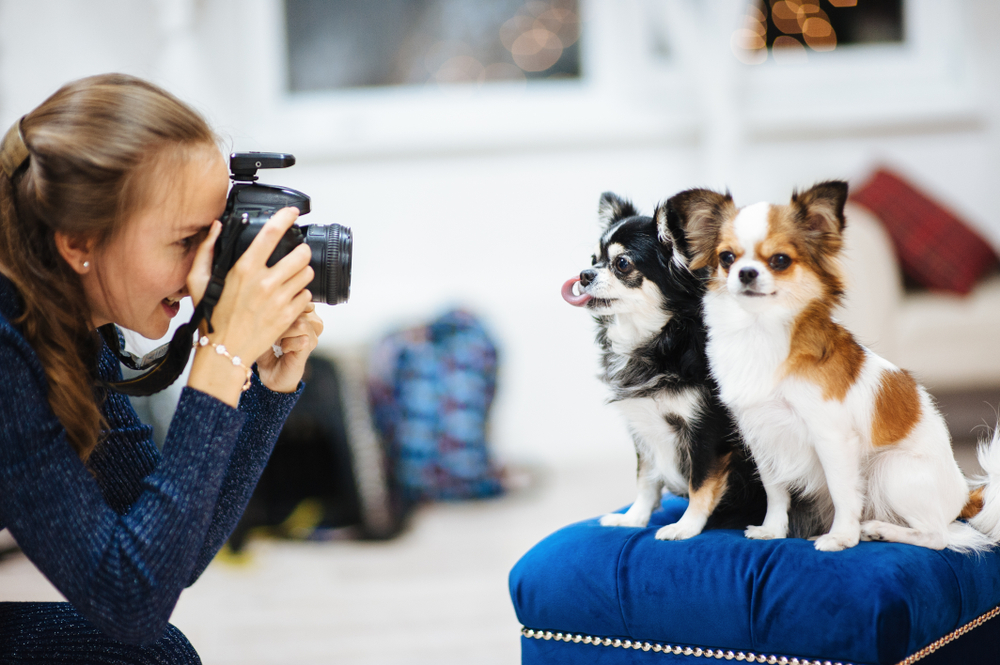
Can Dogs See Screens?
Yes, dogs can see television screens and are often found bewitched by flitting birds in nature videos or barking at dog videos. Quieter dogs may be more prone to being a TV watcher than highly excitable dogs that can’t sit still to pay attention to a screen. All that said, dogs don’t process vision the same way we do—they’re dichromatic, meaning they can only see light in blue and yellow spectrums. By contrast, red probably looks like a dark brown to your dog.
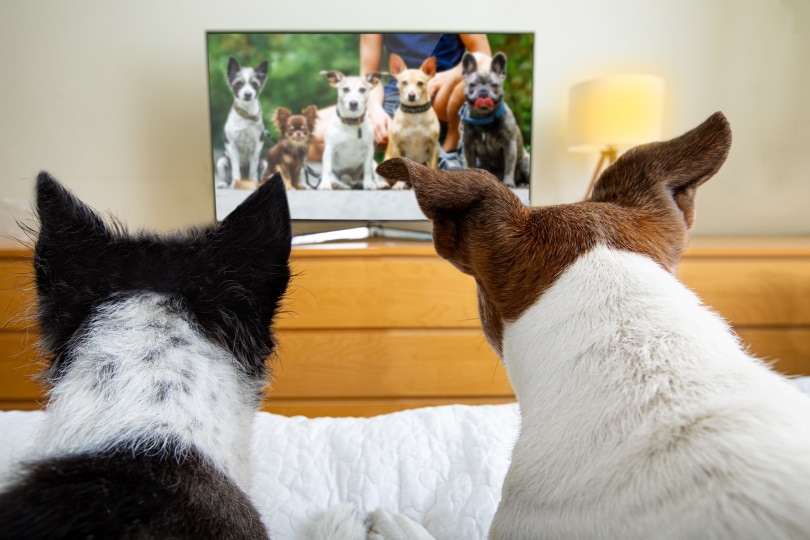

Conclusion
Dogs may not be able to help us edit their photos, but they may understand our body language when they’re being photographed or when a camera is nearby. You can help your dog feel more at ease with your camera by letting them check it out before slowly adding treats with calm behavior to build positive associations.
Featured Image Credit: VL Studio, Shutterstock

